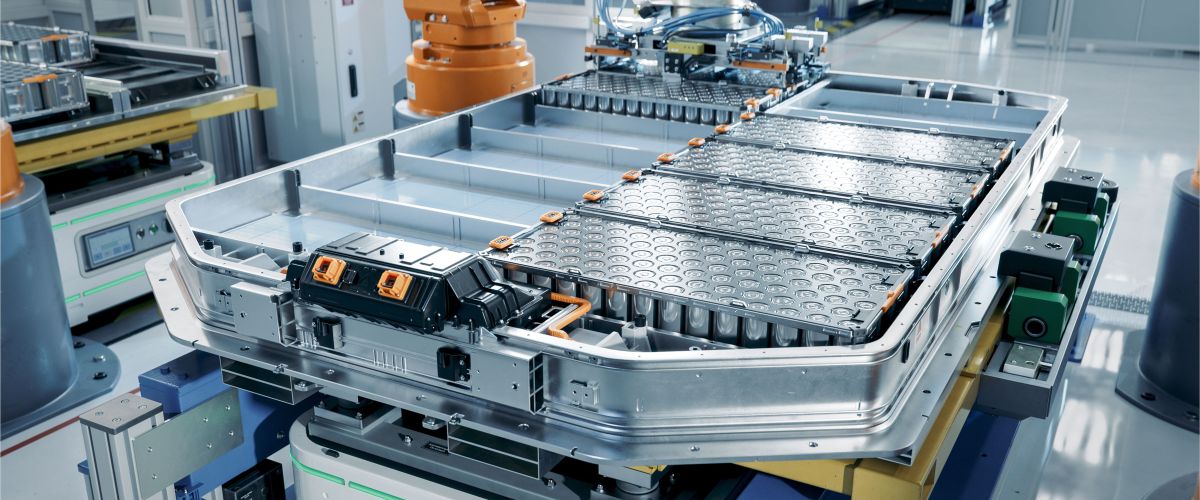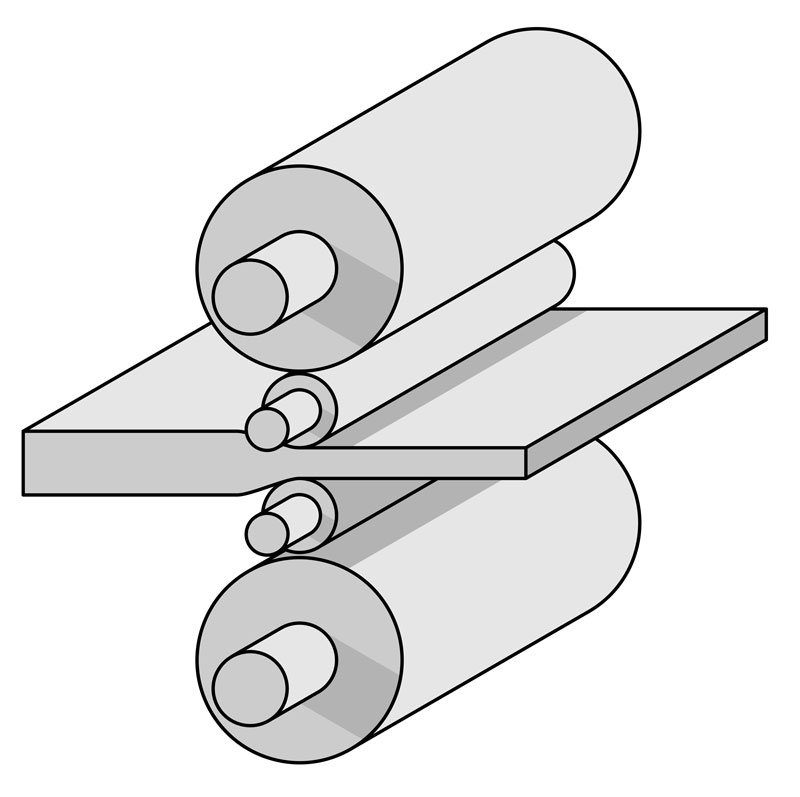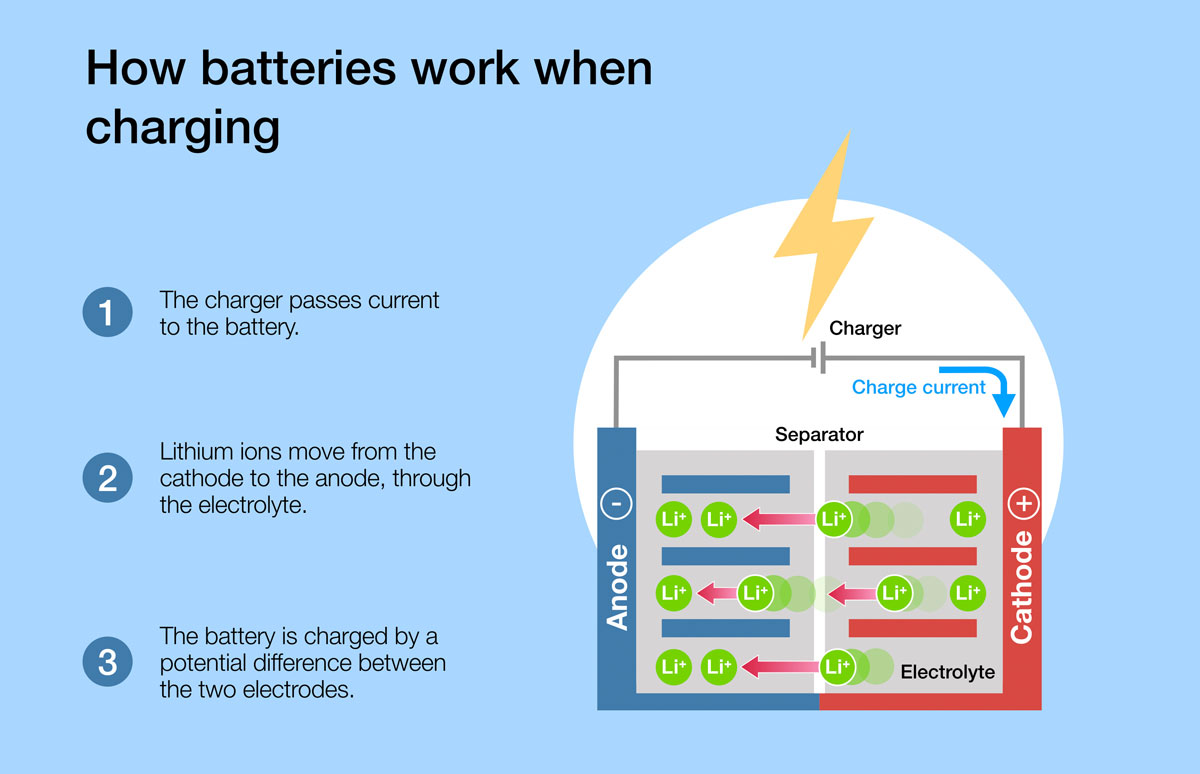
What Is the Calendering Process in Lithium-Ion Battery Production?
In lithium-ion battery production, the calendering process is a critical step that improves the quality of the anode and cathode electrode sheets before being assembled into battery cells. Calendering involves passing the anode and cathode electrode sheets through a series of rollers to compress and densify the material. Let’s take a closer look at the calendering process, its purpose, and the importance of calendering to lithium-ion battery performance.

The Calendering Process
Before the calendering process starts, the anode and cathode electrode material are coated onto a thin metal foil called a current collector. Current collectors are bridging components that collect electrical current generated at the electrodes and connect with external circuits. They are responsible for inducing electrochemical reactions during charging and discharging. The slurry is then dried to remove any solvent leaving a porous layer of active material adhered to the foil.
In the beginning of the calendering process, the coated foils are fed through the calendering two or more rollers that apply pressure to the anode and cathode electrode sheets. The pressure and the gap between the rollers are precisely controlled to achieve the desired density and thickness.
The calendering process in the lithium-ion battery manufacturing is where Kadant’s roll cleaning technology improves production and the end product. The VeriLite™ roll cleaner assembly is a unique, compact, continuous roll cleaner designed to keep the calender rolls free of debris. Check out the article, “Kadant Solutions Plays a Critical Role in Lithium-ion Battery Production,” to learn more about our role in lithium-ion battery manufacturing.
The Purpose of Calendering
The inspection of the anode and cathode happens electrodes at the end of the calendering process. Inspectors are checking the quality control, uniformity in thickness, density, and surface smoothness. Any deviations can lead to performance inconsistencies in the final battery product.
- Density Increase: Calendering increases the density of the anode and cathode electrode coatings, ensuring that the active material is compacted. Higher density improves the electrical conductivity within the electrode and maximizes the amount of active material in each volume. This can enhance the energy capacity of the battery.
- Thickness Uniformity: The calendering process ensures that the anode and cathode electrode sheets have uniform thickness across their entire surface. Uniform thickness is crucial for consistent battery performance because it ensures even ion flow and electrical properties throughout the cell.
- Improved Adhesion: Calendering helps to improve the adhesion of the active material to the current collector. Strong adhesion is vital for maintaining the structural integrity of the anode and cathode electrodes. It’s also imperative for efficient electron transport during battery charging and discharging.
- Pore Structure Optimization: By controlling the calendering pressure and the gap between the rolls, lithium-ion battery manufacturers can adjust the pore structure of the anode and cathode electrode coatings. The pore size and distribution affect the electrolyte infiltration and the rate at which ions can move through the electrode, impacting the battery's charge and discharge rates.
The calendering process directly influences several key performance parameters of lithium-ion batteries, including energy density, power density, cycle life, and safety. By optimizing anode and cathode electrode density and uniformity, manufacturers can produce batteries that offer higher energy storage, faster charging and discharging capabilities, and longer operational lifetimes. Additionally, ensuring the structural integrity of the electrodes through proper adhesion to the current collectors reduces the risk of mechanical failure and potential safety hazards during battery use.

Given its significant impact on battery quality and performance, the calendering process is a critical area of focus in lithium-ion battery manufacturing. Researchers continue to identify new slurry chemistries, both wet and dry slurry preparation techniques, and other process improvements that all rely on optimal calender performance.
Resources
- Blanchette, C. (2021, February 25). How Lithium-Ion Battery Manufacturers Can Conquer Separator Film, Coating, and Calendering. Advancing Materials.
- Minos, S. (2023, February 28). How Lithium-ion Batteries Work. Energy.gov; US Department of Energy.
- Battery electrode calendering process. (n.d.). Www.linkedin.com.
- CIDETEC. (2021, July 26). 3. Calendering. YouTube.
Related Articles
Tagged with
Author
Share
Let’s Connect
Connect with Kadant Solutions Division on LinkedIn to learn more about our employees, products, and services.
